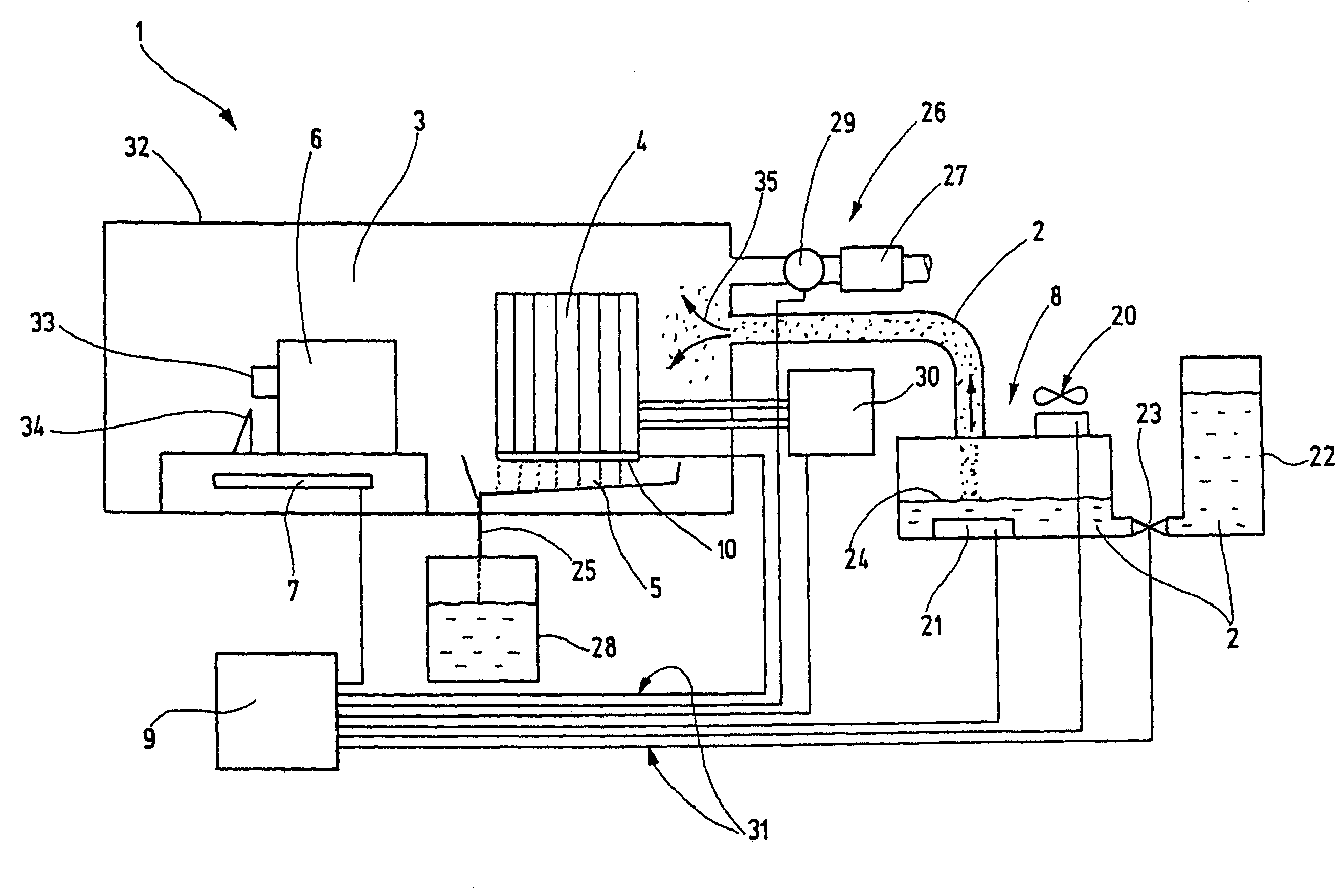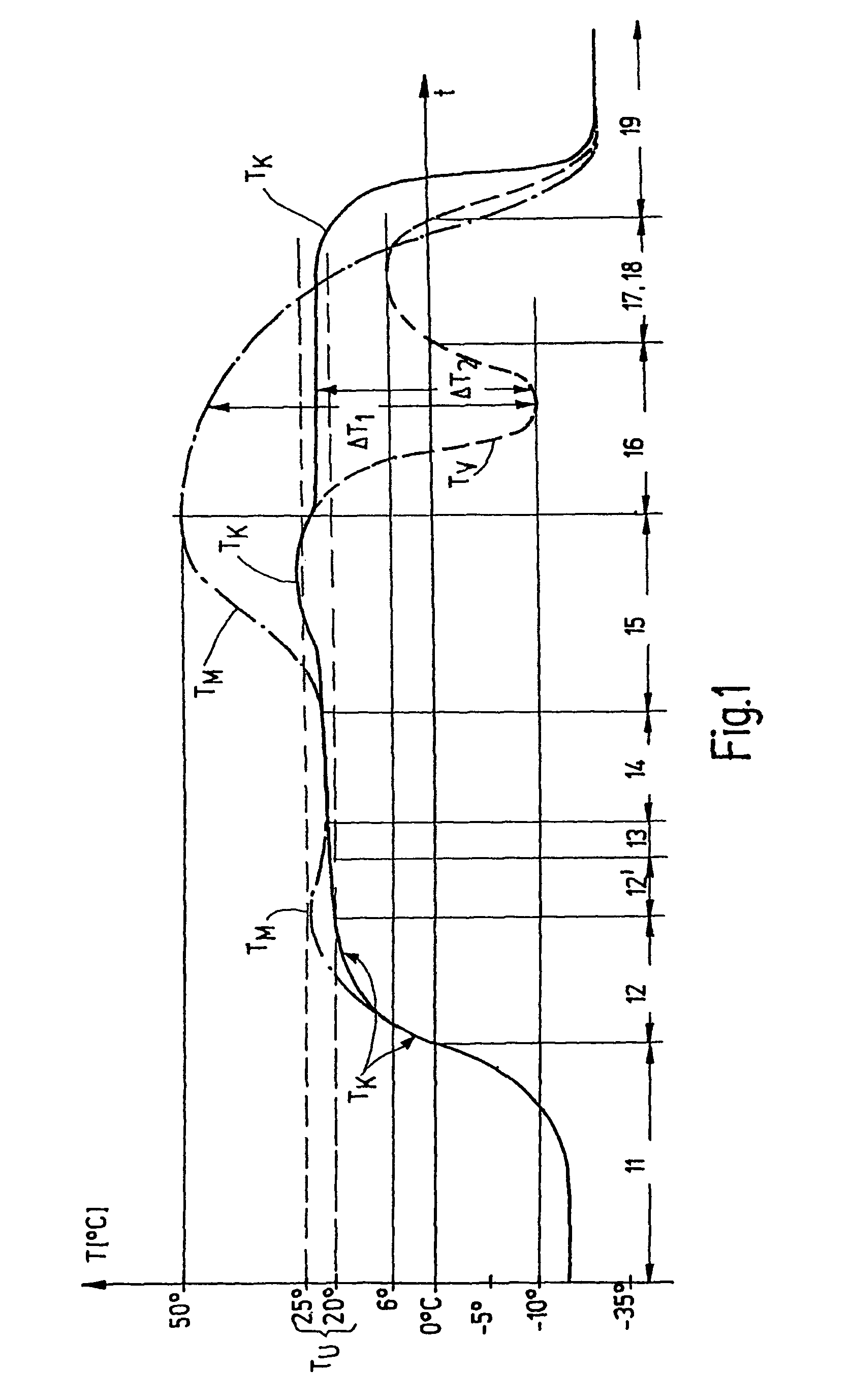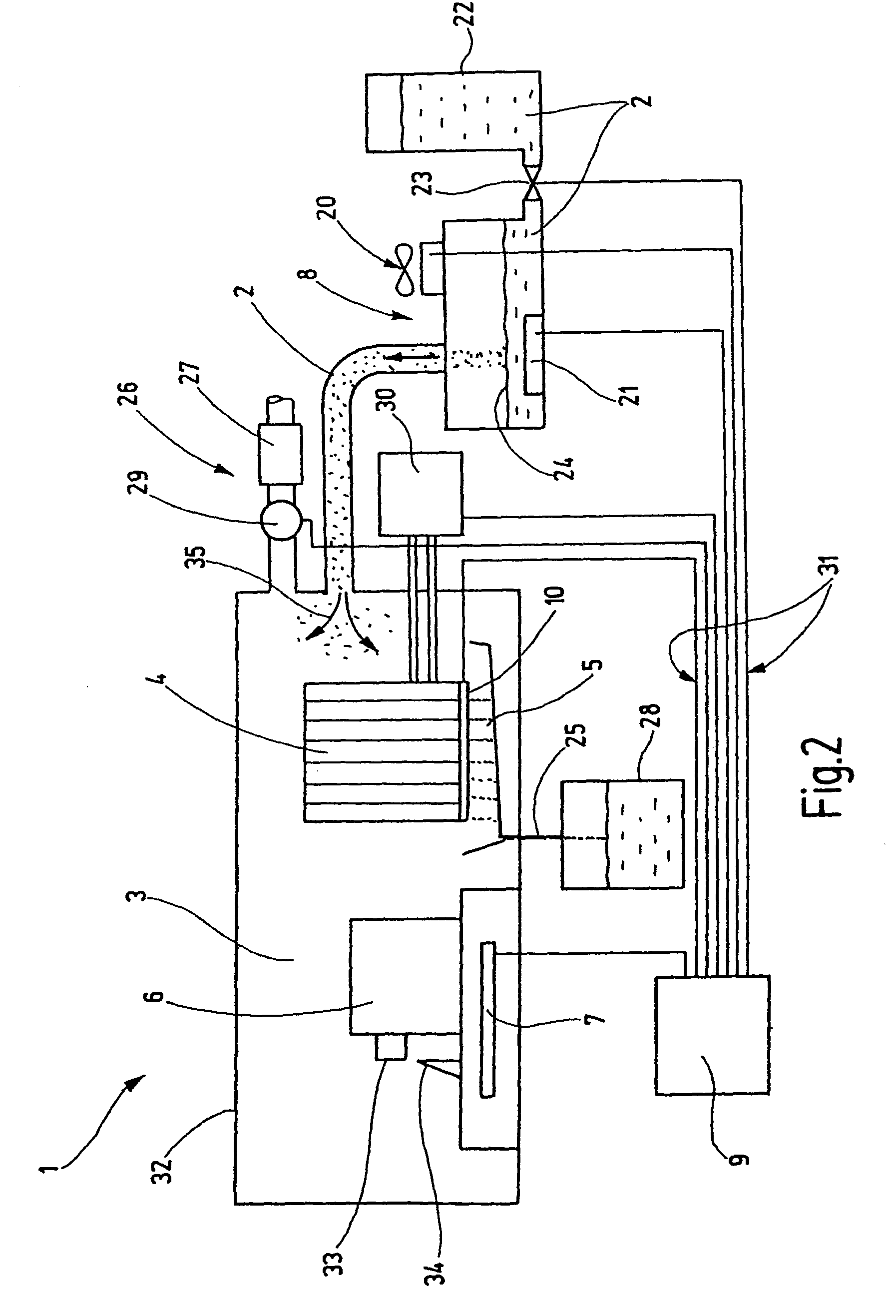Method for disinfecting a microtome cryostat
a microtome and cryostat technology, applied in the direction of curing sample devices, lavatory sanitory, construction, etc., can solve the problems of difficult removal of residual ozone, difficult thawing of spraying, high inflammability, etc., to prevent thawing, prevent residual contamination, and excellent disinfection of microtome
- Summary
- Abstract
- Description
- Claims
- Application Information
AI Technical Summary
Benefits of technology
Problems solved by technology
Method used
Image
Examples
Embodiment Construction
[0026]FIG. 1 shows examples of possible temperature dependences of the inventive method, wherein the temperatures T in 0° C. are plotted against time t and possible method steps 11 through 19 are shown.
[0027]Starting from an operational temperature of the microtome of between −5° C. and −35° C., a defrosting phase 11 is initiated with heating 12 to at least the surrounding temperature TU which is within a range from 20 to 25° C. This process is preferably accelerated by operating the heater 7 of the microtome 6, wherein heating via the microtome 6 is advantageous in that the latter does not thaw. For this reason, the disinfectant 2 cannot be diluted by the dew during subsequent disinfection. In view of the device features, reference is made to FIG. 2.
[0028]Due to the microtome heater, the temperature TM of the microtome 6 increases faster than the temperature TK of the cryostat chamber 3. Heating 12 is therefore preferably followed by a temperature balancing time 12′. When all compo...
PUM
| Property | Measurement | Unit |
|---|---|---|
| temperature | aaaaa | aaaaa |
| temperatures | aaaaa | aaaaa |
| temperature | aaaaa | aaaaa |
Abstract
Description
Claims
Application Information
 Login to View More
Login to View More - R&D
- Intellectual Property
- Life Sciences
- Materials
- Tech Scout
- Unparalleled Data Quality
- Higher Quality Content
- 60% Fewer Hallucinations
Browse by: Latest US Patents, China's latest patents, Technical Efficacy Thesaurus, Application Domain, Technology Topic, Popular Technical Reports.
© 2025 PatSnap. All rights reserved.Legal|Privacy policy|Modern Slavery Act Transparency Statement|Sitemap|About US| Contact US: help@patsnap.com



